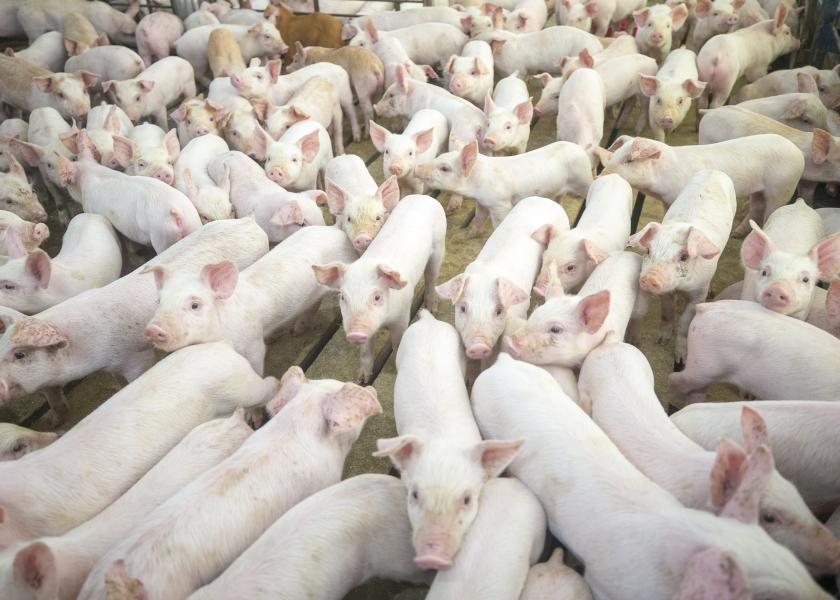China’s Growing Need for Protein: New Study Excites U.S. Pig Farmers

U.S. pork producers have reason to be excited. A new report from the National Pork Board digs into the growing short- and long-term protein needs facing China and how U.S. pork can position itself to meet that demand.
In addition, the report Pork 2040: China Market Assessment also reveals the impact that African swine fever (ASF) is having on both China’s short- and long-term protein needs and explores how the Chinese pork industry and supply chain will change as a result.
“Pork is a critical part of the Chinese diet with per capita consumption nearing 88 pounds* per person per year,” says Norman Bessac, vice president of international marketing for the Pork Checkoff. “This report will help exporters position U.S. pork as the supplier of choice, thereby building value for all U.S. pork producers.”
The report provides critical information for producers about the future of the U.S. pork industry’s export market, says Jan Archer, a pig farmer from eastern North Carolina.
“When you look at what’s happening to the pork industry in general – not only the expansion in our sow numbers, but also the improvements in productivity – the cost of those improvements has to be absorbed by our export market because domestic consumption has been relatively flat,” Archer says.
U.S. pork positions for success in China
The report outlines critical insights that U.S. pork exporters can use to position themselves for long-term success in the Chinese market.
“As a farmer, reports like this help guide my decisions of what I want to do with my herd and what I'm going to do with my farm. Is there is there a place for me in the future? I think clearly this report shows there is,” Archer adds.
According to the report, pork consumption in China peaked in 2014 and will continue to see a slow decline as the Chinese population grows to its highest level in 2030. As the availability of other proteins – specifically fish, chicken and beef – increases along with increased disposable income, consumers will look to diversify center-of-the-plate protein options.
The report details steps that pork exporters can take now to increase exports to China in the short-term and defines a strategy to meet long-term demands.
In the short-term, U.S. pork is poised to help fill the urgent protein needs that ASF is creating in China due to the decrease in China’s domestic pig population, the report says. With the current ASF outbreak, the U.S. export industry needs to work hard to capitalize on the potential market share it can garner.
The demand in the short term will be for pork cuts, variety meats and carcasses. Exporters also should use the benefit of time to build loyalty with both Chinese processors and consumers.
In the long-term, Chinese pork production will have rebounded as 2025 approaches, the report says, and farms will have had time to rebuild and become more modern in China. As Chinese domestic production rebounds, Chinese pork will replace most of the import growth seen during the ASF outbreak. However, the report says U.S. exporters can use these next five years to build customer relationships and value around their products in order to differentiate themselves as a preferred supplier in the long-term.
“This report shows us our opportunity to build long-term customers,” says Derrick Sleezer, a pig farmer from Iowa. “If we do it right and get better at it, we will build that long-term relationship and maintain that going forward. And that’s what you can get excited about.”
An investment in U.S. pig farmers
Sleezer says it’s important to understand the marketplace. “A lot of times we focus on production, but we need to see what marketing potential and opportunities are out there for our product,” he adds.
From access to export markets to producers providing the safest, highest quality, most affordable pork in the world to U.S. grain farmers growing more crops every year that allow pork producers to keep their costs in line, Sleezer says the in-depth analysis was promising.
“With all the information that was put together in this report, it shows you how all of those pieces work together to make those marketing opportunities available and successful,” Sleezer says.
The research study was conducted by Gira, a global research firm, using Pork Checkoff dollars and funds from the USDA Foreign Agricultural Services Emerging Markets Program (EMP).
Archer says that’s the other thing that really resonated with her as a producer after reading the report.
“This is a great use of my Checkoff dollars,” Archer says. “It’s exactly how I want to see that money invested – in a way that's going to bring us value and increase our profits.”
The Pork Board has developed a free marketing toolkit, which includes ideas that U.S. pork exporters can use to build their business in China. The full report is available at pork.to/international. The Pork Checkoff collaborated with the U.S. Meat Export Federation and the National Pork Producers Council on the Pork 2040 study.
“The Pork Checkoff is committed to adding value for pork producers,” said David Newman, a pig farmer representing Arkansas and president of the National Pork Board. “One of the ways to build value is to expand U.S. pork exports in developed and emerging markets. This market research and future studies will help key decision-makers to define and develop these markets.”
*Carcass Weight Equivalent (CWE)
More from Farm Journal's PORK:
China to Shut Down Small Slaughterhouses to Control ASF
African Swine Fever Doesn’t Play Favorites
Is the Pork Industry Ready for African Swine Fever?
Traveling Abroad? 5 Ways You Can Protect the Pork Industry







